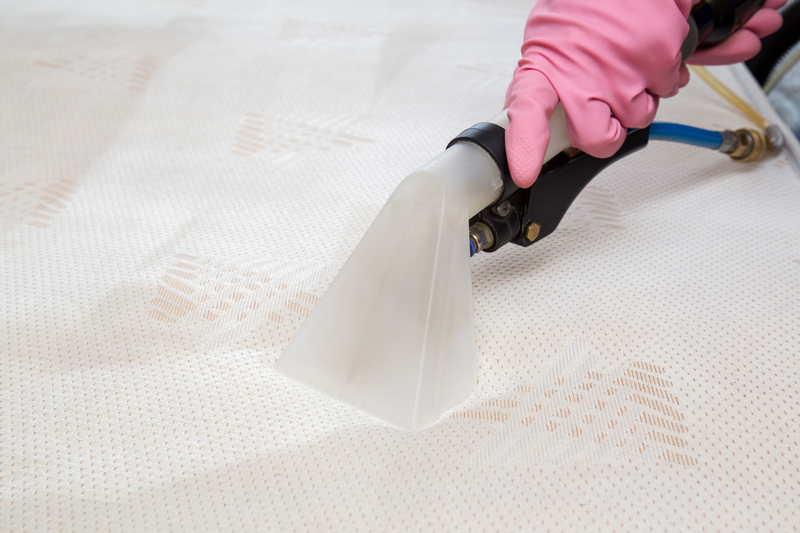Achieve Spotless Velvet Curtains: Effective and Safe Washing Methods
Posted on 01/06/2025
Achieve Spotless Velvet Curtains: Effective and Safe Washing Methods
Velvet curtains are a classic choice when aiming to create a luxurious atmosphere within your home. Their plush texture and elegant appearance make them a standout addition to any room. However, their beauty comes with a particular challenge: maintenance. If you're seeking to achieve spotless velvet curtains, understanding effective and safe washing methods is crucial. This comprehensive, reader-friendly guide provides all the essential knowledge and actionable tips to keep your velvet drapes looking immaculate--without damaging their delicate fibers.
Understanding Velvet Fabric and Its Unique Needs
Before diving into specific velvet curtain cleaning techniques, it's essential to grasp what sets this fabric apart. Velvet is characterized by a dense pile of fibers that creates its signature softness and sheen. This pile, however, is also what makes velvet prone to crushing, trapping dust, and taking on stains.
Types of Velvet Used in Curtains
- Cotton velvet: Soft, absorbent, and luxurious but can shrink or lose shape if washed incorrectly.
- Synthetic velvet (polyester, rayon, etc.): More durable and often easier to clean than pure cotton velvet.
- Silk velvet: Exquisite and delicate, requiring exceptional care--usually dry clean only.
Understanding exactly what type of velvet you have is paramount, as this will determine the safest way to achieve spotless curtain results.
Why Special Washing Methods Matter for Velvet Curtains
- Prevent pile damage: Harsh cleaning can flatten or crush velvet's pile, ruining its look.
- Avoid water spots and shrinkage: Improper washing can cause uneven drying, water stains, or even shrinkage.
- Preserve color and sheen: Velvet's vibrancy and shimmer depend on its fibers remaining in excellent condition.
Hence, adopting safe and effective velvet curtain cleaning techniques is essential for long-term fabric integrity and beauty.

Preparing for Velvet Curtain Cleaning: What You Need to Know
Step 1: Check the Manufacturer's Label
Always start by locating and reading the care label attached to your velvet curtains. The manufacturer's instructions will indicate if the curtains are machine washable, hand-wash only, or dry clean only. Ignoring this advice can lead to damage.
Step 2: Gather Your Washing Supplies
- Mild, dye-free laundry detergent
- Cold water
- Microfiber cloths
- Soft brushes
- Vacuum with upholstery attachment
- Clean, dry towels
Step 3: Remove Hardware and Detach Carefully
Take down velvet curtains gently to avoid tugging or stretching. Remove all hooks, rings, or other hardware that could snag or damage the delicate fabric during cleaning.
Effective Cleaning Methods for Different Types of Velvet Curtains
Vacuuming: Maintaining Clean Velvet Between Washes
Regular dusting and vacuuming are the easiest ways to keep velvet drapes spotless for longer. Use the upholstery or brush attachment to gently vacuum the surface, always moving in the direction of the pile.
- Set your vacuum to low suction to avoid pulling or stretching the fabric.
- Vacuum once every 2-3 weeks for best results.
Spot-Cleaning Stains On Velvet Curtains
Immediate attention to spills is key for keeping velvet curtains stain-free. The sooner you act, the better your chance of preventing permanent marks.
- Blot, don't rub: Use a clean, dry microfiber cloth to blot up as much of the spill as possible. Rubbing can push the stain deeper into the fabric.
- Mix a mild solution: Combine a few drops of dye-free detergent in a cup of cold water.
- Dab gently: Dampen a clean cloth with the solution and gently blot the stained area. Always test on an inconspicuous spot first.
- Rinse and dry: Use another damp cloth (plain water) to remove any soap residue. Blot with a dry towel and allow to air dry completely.
Hand Washing Velvet Curtains: The Gentle Approach
If your care label allows (or specifically recommends) hand washing velvet curtains, follow this approach:
- Fill a bathtub or basin: Use cold water and add a small amount of gentle laundry detergent.
- Submerge gently: Float the curtains in the water, agitating them very gently. Do not wring, twist, or scrub.
- Soak for 5-10 minutes: This helps loosen dirt without harsh agitation.
- Rinse thoroughly: Drain and refill with clean, cold water. Swish lightly to remove all soap.
- Drip dry: Gently press out excess water (never wring), then lay curtains flat on clean, dry towels or hang to drip dry away from sunlight or heat sources.
Machine Washing Velvet Curtains: Risks and Precautions
Only machine wash your velvet curtains if the manufacturer's label specifically states it's safe. When permitted, follow these precautions:
- Use a delicate or gentle cycle with cold water.
- Wash one set at a time to prevent overcrowding.
- Place curtains in a mesh laundry bag to limit agitation.
- Use minimal detergent and skip fabric softeners or bleach.
- Remove immediately after washing to avoid wrinkles and mildew.
Never use a dryer for velvet curtains. Air drying is essential to protect their shape and texture.
Professional Dry Cleaning: The Safest Route
For real spotless and safe results, especially with silk or antique velvet, dry cleaning is often the preferred method. Professional cleaners have the expertise and equipment to treat delicate fabrics, remove difficult stains, and preserve the curtain's luster.
- Choose a cleaner experienced with velvet and luxury textiles.
- Discuss any specific stains or fabric concerns.
Drying and Caring for Spotless Velvet Curtains
Air Drying: The Only Safe Choice
Velvet should be air dried only. After washing:
- Lay the curtains flat on a clean, dry towel, carefully arranging the pleats or folds as you want them to dry.
- If hanging, make sure curtains are fully supported and do not stretch or pull on the fabric.
- Avoid direct sunlight, as this can fade colors and weaken fibers.
Restoring the Velvet Pile After Cleaning
Cleaning can sometimes flatten velvet's pile. To restore its texture:
- Once dry, use a soft brush to lightly "fluff" the pile in the direction of the nap.
- For stubborn flattening, hold a steam iron several inches away and gently steam, then brush immediately.
Preventative Care for Long-Lasting Spotless Velvet Curtains
Regular Maintenance Tips
- Vacuum at least twice a month to remove dust and prevent buildup.
- Immediately spot clean any spills or stains.
- Rotate curtains if exposed to sunlight, preventing uneven fading.
- Use tiebacks to minimize unnecessary handling and creasing.
What to Avoid When Cleaning Velvet Curtains
- Don't use hot water: Always stick to cold water to avoid fabric damage.
- No wringing or twisting: This can destroy the velvet's pile and shape.
- Avoid harsh chemicals: Bleach and strong detergents can ruin color and texture.
- Never tumble dry: Heat and agitation are disastrous for velvet.
Troubleshooting Common Velvet Curtain Problems
How to Remove Water Spots
Water spots are a common velvet issue if drying isn't handled evenly. If you notice rings or discoloration:
- Lightly dampen the entire area with a clean, damp (not wet) cloth and let it dry evenly to blend the spot.
- Use a hand-held steamer to gently raise flattened pile if needed.
Dealing with Persistent Staining or Odor
For tough stains or unwanted odors that home cleaning can't resolve, it's best to consult a professional. Attempting repeated washes may do more harm than good.

Frequently Asked Questions about Cleaning Velvet Curtains
Can I wash all types of velvet curtains at home?
Not all velvet curtains are suited for home washing. Check the care label--some synthetic blends can handle gentle hand-washing, while cotton velvet may shrink, and silk velvet usually requires professional cleaning.
How often should I clean my velvet curtains?
Regular dusting and spot cleaning can extend the interval between washes. Generally, you should deep clean velvet curtains every 6-12 months, or as needed based on visible soiling or stains.
Is steaming safe for velvet curtains?
Gentle steaming is safe and beneficial for velvet. It can help remove creases and revive crushed pile, but always keep the steamer several inches away and brush the pile immediately afterward.
Conclusion: Achieve Immaculately Clean Velvet Drapes - The Safe Way
Properly caring for spotless velvet curtains is easier than you think, provided you use the right approaches. Effective and safe washing comes down to understanding your fabric, using gentle products, and handling with care at every stage--from dusting to drying. Whether you choose to vacuum regularly, spot-clean stains promptly, hand wash with a light touch, or trust the professionals, your velvet curtains will continue to elevate your home's style for years to come. For best results, handle velvet with respect: gentle, informed cleaning is the key to keeping your luxurious window dressings looking spotless and stunning.
If you're investing in the opulence of velvet, applying these washing methods for velvet curtains ensures a lasting brilliance that transforms any room into a haven of comfort and elegance.
- Remember: Always check and follow the care label before proceeding with any cleaning method.
- For delicate or expensive velvet, consider enlisting a professional for the best and safest results.
- With regular maintenance and attentive care, achieving and maintaining spotless velvet curtains is entirely within reach!

